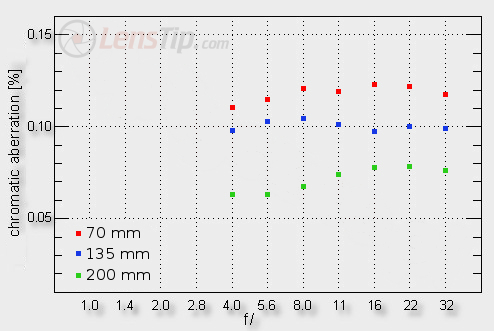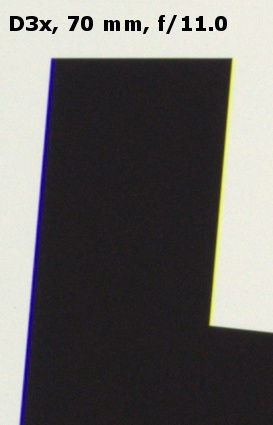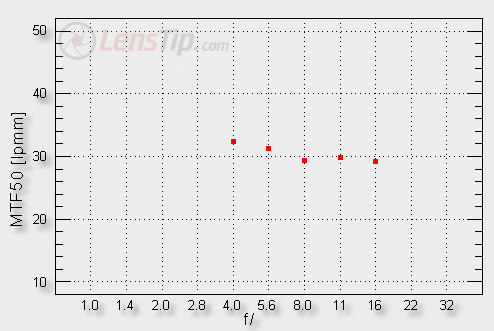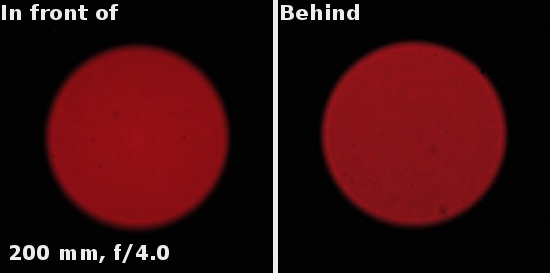Tokina AT-X PRO FX SD 70-200 f/4 VCM-S
5. Chromatic and spherical aberration
The longitudinal chromatic aberration is not especially problematic. When you look closely at the blur you can notice some yellow hue behind the focal point and definitely lighter areas in front of the focus, with perhaps also some delicate bluish cast. Our assessment in this category remains only positive.
 |
Please Support UsIf you enjoy our reviews and articles, and you want us to continue our work please, support our website by donating through PayPal. The funds are going to be used for paying our editorial team, renting servers, and equipping our testing studio; only that way we will be able to continue providing you interesting content for free. |
- - - - - - - - - - - - - - - - - - - - - - - - - - - - - - - - - - - - - - - - - - - - - - - -
Wide angle lenses produced by Tokina usually have a lot of problems with the lateral chromatic aberration so we were really curious how a 70-200 mm device would deal with that. The appropriate graphs with the results on the edge of the APS-C/DX sensor and full frame are presented below.


The aberration level is the highest at the shorter end of the focal range, reaching there over 0.12%, dangerously close to high values. The least serious problems can be noticed at 200 mm where the aberration is on the borderline between low and medium values.
Once again the Tokina compares unfavourably with its rivals. The stabilized lenses produced by Canon and Nikon never exceeded 0.08% and the old Canon 70-200 mm f/4L exceeded it very slightly at 200 mm and by f/32. It is sad that in this category the Tokina wasn’t able to perform better than even a device designed over 15 years ago…
 |
Spherical aberration
The traces of spherical aberration are visible already in the first photos of this chapter. While passing from f/4.0 to f/8.0 aperture you can notice how the depth of field shifts towards objects situated further on. It is the so-called ‘focus shift’ effect; its direct cause is the bad correction of chromatic aberration.
Our visual impressions were confirmed by the measurements. We set the focus by f/4.0 for one of our testing charts, as precisely as it was only possible, and then, without changing the position of the distance scale, we took several photos just closing the aperture a bit more. If the spherical aberration had been corrected in a perfect way the resolution should have increased on stopping down, reaching the peak near f/8.0 and then decreased due to diffraction. It wasn’t the case, though, and a graph, shown below proves that much (we chose 200 mm focal length for our experiment).

The resolution doesn’t increase on stopping down, quite the opposite, and the focus shift connected to the spherical aberration is responsible for it.
What is interesting, that aberration is not especially pronounced in images of defocused light points; however, you can notice some differences when comparing the circles you get in front of and behind the focus.







